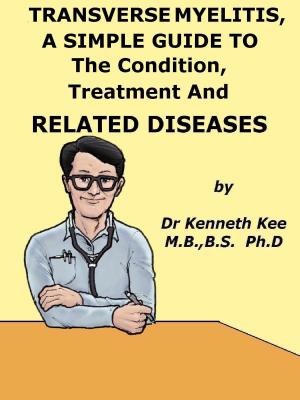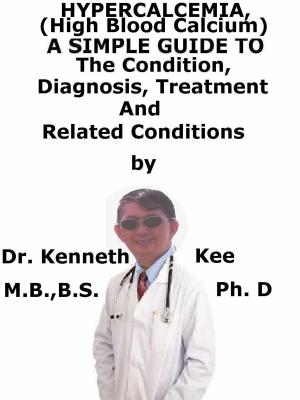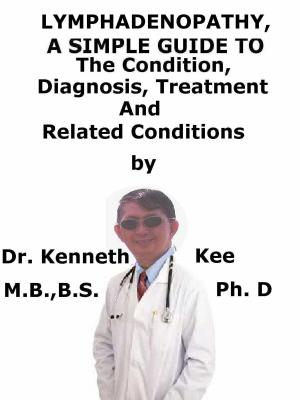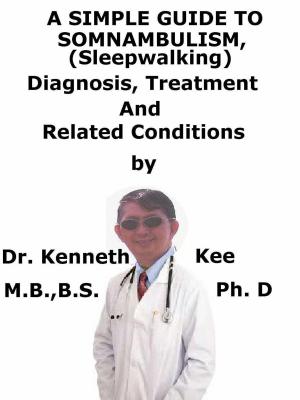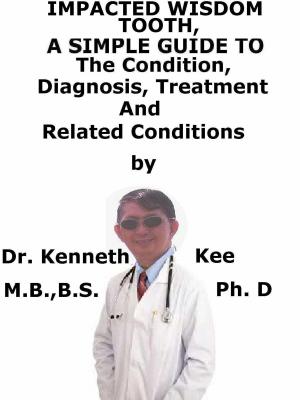Unstable Angina, A Simple Guide To The Condition, Diagnosis, Treatment And Related Conditions
Nonfiction, Health & Well Being, Medical, Specialties, Internal Medicine, Cardiology, Health, Ailments & Diseases, Heart| Author: | Kenneth Kee | ISBN: | 9780463889022 |
| Publisher: | Kenneth Kee | Publication: | April 30, 2018 |
| Imprint: | Smashwords Edition | Language: | English |
| Author: | Kenneth Kee |
| ISBN: | 9780463889022 |
| Publisher: | Kenneth Kee |
| Publication: | April 30, 2018 |
| Imprint: | Smashwords Edition |
| Language: | English |
This book describes Unstable Angina,, Diagnosis and Treatment and Related Diseases
Unstable angina consists of the spectrum of medical presentations known collectively as acute coronary syndromes (ACS).
The conventional term unstable angina was intended to signify the intermediate state between myocardial infarction (MI) and the more chronic state of stable angina.
Angina Pectoris is an early warning sign of an ischemic heart disease.
Angina happens when the blood supply of the heart is partially blocked either by narrowing of the blood vessel.
The interplay between disrupted atherosclerotic plaque and overlaid thrombi is evident in many cases of unstable angina, with resulting hemodynamic deficit or micro-embolization.
The disorder is different from stable angina, in which the normal underlying cause is a fixed coronary stenosis with compromised blood flow and slow, progressive plaque growth that permits potential development of collateral vessels.
Stable angina is a progressive disorder with persistent development of atherosclerosis plague obstructing the blood vessel.
Unstable angina happens when the hemodynamic relationship of atherosclerotic plague and micro-emboli interacts to alter the blood flow in the coronary blood vessels.
Main types of Angina:
1.Stable angina
2.Unstable angina
3.Variant angina
4.Micro-vascular angina
Causes
Coronary artery disease due to atherosclerosis is the most frequent cause of unstable angina.
Atherosclerosis is the buildup of fatty material, called plaque, along the walls of the arteries.
This causes arteries to become narrowed and more inflexible.
The narrowing can reduce blood flow to the heart, causing chest pain.
Symptoms
The patient may be forming unstable angina if the chest pain:
1.Starts to feel different, is more severe or while the patient is at rest
2.Lasts longer than 15 to 20 minutes
3.Happens without cause
4.Does not respond well to nitroglycerin
5.Happens with a drop in blood pressure or shortness of breath
Diagnosis
The doctor may hear abnormal sounds, such as a heart murmur or irregular heartbeat
1.Blood tests to indicate if the patient has heart tissue damage
2.ECG
The highest-risk ECG findings (ST-segment elevation)
3.Echocardiography can give a quick evaluation of left ventricular function
4.Stress tests
5.Coronary angiography
6.MRI of the Heart
Treatment
The patient may require checking into the hospital to get some rest, have more tests, and prevent complications.
Blood thinners (anti-platelet drugs) are given to treat and prevent unstable angina.
Medicines are aspirin and the drug clopidogrel or something similar (ticagrelor, prasugrel)
During an unstable angina event:
1.The patient may get heparin (or another blood thinner) and nitroglycerin (under the tongue or through an IV).
2.Other treatments may be medicines to control blood pressure, anxiety, abnormal heart rhythms, and cholesterol (such as a statin drug).
3.A procedure called angioplasty and stenting can often be performed to open a blocked or narrowed artery.
Angioplasty is an intervention to open narrowed or blocked blood vessels that supply blood to the heart.
A coronary artery stent is a tiny, metal mesh tube that opens up the wall inside a coronary artery.
A stent is often positioned after angioplasty.
It helps to prevent the artery from closing up again.
A drug-eluting stent has medicine in it that helps to prevent the artery from closing over time.
Surgical intervention in unstable angina may be:
1.Cardiac catheterization
2.Revascularization
Heart bypass surgery may be done for some people based on
a.Blocked arteries
b.Number of arteries
c.The severity of narrowing of the coronary arteries
TABLE OF CONTENT
Introduction
Chapter 1 Unstable Angina
Chapter 2 Causes
Chapter 3 Symptoms
Chapter 4 Diagnosis
Chapter 5 Treatment
Chapter 6 Prognosis
Chapter 7 Angina Pectoris
Chapter 8 Coronary Heart Disease
Epilogue
This book describes Unstable Angina,, Diagnosis and Treatment and Related Diseases
Unstable angina consists of the spectrum of medical presentations known collectively as acute coronary syndromes (ACS).
The conventional term unstable angina was intended to signify the intermediate state between myocardial infarction (MI) and the more chronic state of stable angina.
Angina Pectoris is an early warning sign of an ischemic heart disease.
Angina happens when the blood supply of the heart is partially blocked either by narrowing of the blood vessel.
The interplay between disrupted atherosclerotic plaque and overlaid thrombi is evident in many cases of unstable angina, with resulting hemodynamic deficit or micro-embolization.
The disorder is different from stable angina, in which the normal underlying cause is a fixed coronary stenosis with compromised blood flow and slow, progressive plaque growth that permits potential development of collateral vessels.
Stable angina is a progressive disorder with persistent development of atherosclerosis plague obstructing the blood vessel.
Unstable angina happens when the hemodynamic relationship of atherosclerotic plague and micro-emboli interacts to alter the blood flow in the coronary blood vessels.
Main types of Angina:
1.Stable angina
2.Unstable angina
3.Variant angina
4.Micro-vascular angina
Causes
Coronary artery disease due to atherosclerosis is the most frequent cause of unstable angina.
Atherosclerosis is the buildup of fatty material, called plaque, along the walls of the arteries.
This causes arteries to become narrowed and more inflexible.
The narrowing can reduce blood flow to the heart, causing chest pain.
Symptoms
The patient may be forming unstable angina if the chest pain:
1.Starts to feel different, is more severe or while the patient is at rest
2.Lasts longer than 15 to 20 minutes
3.Happens without cause
4.Does not respond well to nitroglycerin
5.Happens with a drop in blood pressure or shortness of breath
Diagnosis
The doctor may hear abnormal sounds, such as a heart murmur or irregular heartbeat
1.Blood tests to indicate if the patient has heart tissue damage
2.ECG
The highest-risk ECG findings (ST-segment elevation)
3.Echocardiography can give a quick evaluation of left ventricular function
4.Stress tests
5.Coronary angiography
6.MRI of the Heart
Treatment
The patient may require checking into the hospital to get some rest, have more tests, and prevent complications.
Blood thinners (anti-platelet drugs) are given to treat and prevent unstable angina.
Medicines are aspirin and the drug clopidogrel or something similar (ticagrelor, prasugrel)
During an unstable angina event:
1.The patient may get heparin (or another blood thinner) and nitroglycerin (under the tongue or through an IV).
2.Other treatments may be medicines to control blood pressure, anxiety, abnormal heart rhythms, and cholesterol (such as a statin drug).
3.A procedure called angioplasty and stenting can often be performed to open a blocked or narrowed artery.
Angioplasty is an intervention to open narrowed or blocked blood vessels that supply blood to the heart.
A coronary artery stent is a tiny, metal mesh tube that opens up the wall inside a coronary artery.
A stent is often positioned after angioplasty.
It helps to prevent the artery from closing up again.
A drug-eluting stent has medicine in it that helps to prevent the artery from closing over time.
Surgical intervention in unstable angina may be:
1.Cardiac catheterization
2.Revascularization
Heart bypass surgery may be done for some people based on
a.Blocked arteries
b.Number of arteries
c.The severity of narrowing of the coronary arteries
TABLE OF CONTENT
Introduction
Chapter 1 Unstable Angina
Chapter 2 Causes
Chapter 3 Symptoms
Chapter 4 Diagnosis
Chapter 5 Treatment
Chapter 6 Prognosis
Chapter 7 Angina Pectoris
Chapter 8 Coronary Heart Disease
Epilogue


